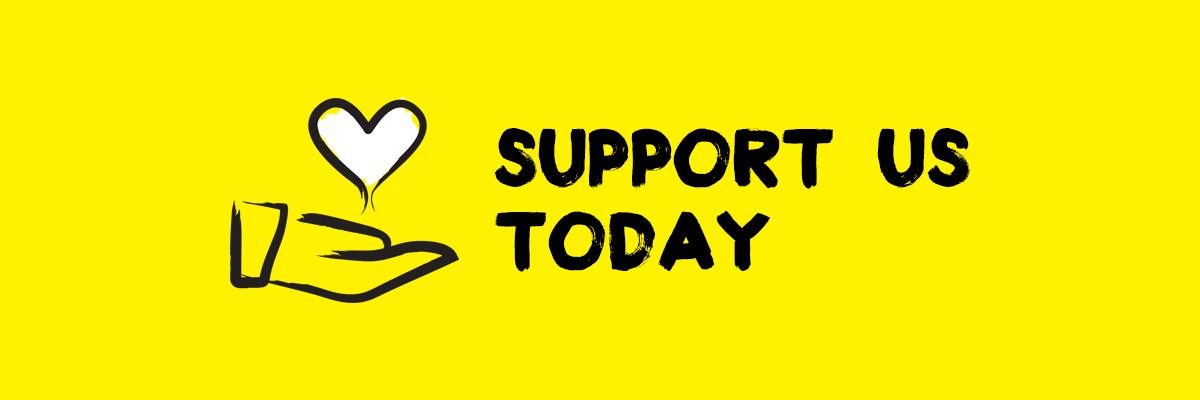Music
Trailers
DailyVideos
India
Pakistan
Afghanistan
Bangladesh
Srilanka
Nepal
Thailand
Iraq
Iran
Russia
Brazil
StockMarket
Business
CryptoCurrency
Technology
Startup
Trending Videos
Coupons
Football
Search
Download App in Playstore
Download App
Best Collections
Technology
The U.S. podcasting industry had a record year in 2017, reaching $314 million in revenue & a figure thatup 86 percent from the $169 million in 2016, according to new study out this morning from theInteractive Advertising Bureau (IAB) and jointly conducted by IAB and PwC U.S.
The firms are also estimating podcast revenue will see triple-digit 110 percent growth between 2017 and 2020, when revenues will then reach $659 million.
The study also examined what sort of podcasts were benefiting the most from the increased interest in the audio format, as well as what sort of advertisements were preferred.
As you may have guessed (if you spend any time listening to podcasts), host-read ads were the more heavily used ad type, accounting for a whopping two-thirds of all ads in 2017.
Direct response ads transacted on a cost per thousand basis made up the majority of the campaigns, followed by brand awareness ads at 29 percent.
In terms of placement, ads that were inserted or edited into programming accounted for 58 percent of the ad inventory last year, the report also found.
Top advertisers included financial services (18% share of ads), direct-to-consumer retailers (16%), and arts and entertainment (13% of all ads).
However, certain types of podcasts are doing better than others when in comes to raking in the ad dollars.
In fact, the top four content genres, out of the 14 measured, generated over half the advertising revenue in 2017. These were: Arts - Entertainment (17%), Technology (15%), News/Politics/Current Events (13%), and Business (11%).
IAB has particular insight into the podcasting market, thanks to member companies likeAudioboom, Authentic, ESPN Radio, Gimlet Media, How Stuff Works, Market Enginuity, Midroll Media, National Public Media, Panoply, Podcast One, PMM, Turner Podcast Network, Westwood One, WNYC Studios, and Wondery, who underwrote the industry study.
And in case you&re suspicious that an ad bureau claiming ads are doing great, the numbers here back up other industry reports confirming the podcast explosion. Nielsen, for example, claims that half of U.S. households listen to podcasts now, including big consumer groups & like beer buyers or new parents & who advertisers want to target.
ComScore, meanwhile, claims1 in 5 Americans aged 18-49 listen to podcasts at least once per month.
And podcast startups are benefitting from the increased consumer interest in the format, as well. Wondery, for instance, raised $5 million earlier this year fromGreycroft, Lerer Hippeau Ventures and Shari RedstoneAdvancit Capital. At the time of the raise, IAB was forecasting $220 million in podcast ad revenue.
HowStuffWorks also raised $15 million last year, as didGimlet Media; radio broadcaster Entercom bought 45 percent of podcast producer and network, Dgital Media, home to &Pod Save America.& Podcast platform Anchor raised $10 million in 2017, podcast platformArt19 raised $7.5 million, and, this spring, Castbox raised $13.5 million for its podcast app.
Investors wouldn&t be throwing money at the business if there wasn&t potential for more money to be made. And to some extent, those increased opportunities to reach consumers via audio are attributed to the changes in how we listen to audio content & that is, on mobile devices instead of radio, and on smart speakers in the home.
PwCalso credits smart speakers and mobile as contributing to the opportunity here.
&The growing trend toward ‘anywhere and everywhere& media engagement has created tremendous opportunity for digital media, of which podcasting is a significant component,& said David Silverman, a Partner at PwC U.S.m in a statement about the new report. &Whether at home on a smart speaker, at work on a PC, or somewhere in between on a mobile device, more and more Americans are listening while they live, providing a robust podcast platform where advertisers can connect with todayconsumers,& he said.
- Details
- Category: Technology
Read more: US podcast ad revenues hit record $314 million in 2017
Write comment (90 Comments)Mark ZuckerbergFacebook messages were retracted from the inboxes of some users, six sources told TechCrunch in April. Facebook quickly tried to normalize that breach of trust by claiming it would in the coming months give everyone the ability to unsend messages. We haven&t heard a word about it since, and Facebook told me it had nothing more to share here today.
Well Snap is stepping up. Snapchat will let you retract your risqué, embarrassing or incriminating messages thanks to a new feature called Clear Chats thatrolling out globally over the next few weeks.
Hold down on a text, image, video, memory, sticker or audio note in a one-on-one or group chat Snapchat message thread and you&ll see a Delete button. Tap it, and Snapchat will try to retract the message, though it admits it won&t always work if the recipient lacks an internet connection or updated version of the app. The recipient will also be notified… something Facebook didn&t do in the case of Zuckerbergmessages.
The Clear Chats feature could make people more comfortable sending sensitive information over Snapchat. The app already auto-deletes messages after they&re viewed, unless a recipient chooses to screenshot or Save them, which their conversation partner can see. This could be especially useful for thwarting cases of revenge porn, where hackers or jilted ex-lovers expose someonenude images.
Unfortunately, the Clear Chats option could also be used to send then retract abusive messages, destroying the paper trail. Social media evidence is increasingly being used in divorce and custody battles, which an unsend feature might undermine… especially if Facebook goes through with rolling it out on its platform where messages are normally permanent. But right now, Snapchatpriority is doing whatever it can to boost usage after hitting its slowest growth rate ever last quarter. If teens feel like Snapchat is a consequence-free place to message, whether or not thattrue, they might favor it over SMS and other social apps.
More Snapchat Spectacles and e-commerce news
Snap made a few other announcements today. Spectacles v2, which are actually pretty great and I continue to use, are now available for purchase through Amazon in the U.S., U.K and Canada. The $150 photo- and video-recording sunglasses come to more European countries via Jeff Bezos soon, such as France, Germany, Italy and Spain. Amazon will sell Spectacles in three color combos:Onyx Moonlight, Sapphire Twilight and Ruby Daybreak.
Until now, you could only buy v2 on Snapwebsite. Thatbecause Snapchateagerness to develop a bevy of sales channels made it very tough to forecast demand for its lackluster v1 Spectacles. They only sold 220,000. That led to hundreds of thousands of pairs gathering dust unsold in warehouses, and Snapchat taking an embarrassing $40 million write-off.
&We had an inventory challenge with v1,& SnapVP of hardware Mike Randall told me in April. &We don&t think it was a product issue. It was an internal understanding our demand issue versus a planning issue. So we think by having a more simplistic channel strategy with v2 we can more thoughtfully manage demand with v2 versus v1.& Working with Amazon and its robust toolset should help Snap get Spectacles in front of more buyers without obscuring how many it should be manufacturing.

Still, the worst thing about Spectacles is Snapchat. The inability to dump footage directly to your phonecamera roll, and the incompatibility of its round media format with other social networks, means ittough to share your Spectacles content anywhere else while making it look good. Snap has experimented with a traditional landscape export format, but that hasn&t rolled out. Spectacles could strongly benefit from Snap partnering with fellow apps or open sourcing to let others show its circular always-full-screen format in all its glory.
Finally, Snapchat is launching a new e-commerce ad unit that shows a carousel of purchaseable items at the bottom of the screen that users can tap to buy without leaving the Snapchat app. This follows our prediction that Snap launching its own in-app merch store was really the foundation of a bigger e-commerce platform thatnow rolling out.
Merchants can use the Snap Pixel to measure how their ads lead to sales. The ability to shave down the e-commerce conversion funnel could get advertisers spending more on Snapchat when it could use the dollars. Last quarter it lost $385 million and missed its revenue target by $14 million.
Snapchat is also bringing its augmented reality advertisements to its self-serve ad-buying tool. They&re sold on an effective CPM basis for $8 to $20 depending on targeting. Snapchat is also turning its new multiplayer game filters, called Snappables, into ads.
Overall, itgood to see Snapchat iterating across its software, hardware and business units. Plagued by executive departures, fierce competition from Facebook, a rough recent earnings report and share price troubles, iteasy to imagine the team getting distracted. The long-term roadmap is fuzzy. With Stories becoming more popular elsewhere, Spectacles sales not being enough to right the ship and Instagram preparing to launch a long-form video hub that competes with Snapchat Discover, Snap needs to figure out its identity. Perhaps that will hinge on some flashy new feature that captures the imagination of the youth. That could be its upcoming Snapkit platform that will let users log into other apps using their Snapchat credentials, bring their Bitmoji, and even use SnapAR-equipped software camera within other apps.
But otherwise, it must lock in for a long-haul of efficient and methodical improvement. If itnot growing, the best it can do is hold on to its core audience and squeeze as many dollars out of them as possible without looking desperate.
- Details
- Category: Technology
Read more: Now Snapchat lets you unsend messages like Faceboook promised
Write comment (96 Comments)&Time Is on My Side& may be true for the Rolling Stones (seriously, Mick and the boys have defied time), but we&re here to tell you that time is most definitely not on your side if you want to compete in Startup Battlefield at Disrupt San Francisco 2018, which takes placeSeptember 5-7.
You have a mere two days left before the application window to Startup Battlefield — and your shot at winning $100,000 — slams shut. Drop whatever you&re doing and apply to Startup Battlefield right now.
Startup Battlefield is one of the tech industryleading startup pitch competitions and, without a doubt, itthe best launching pad for early-stage startups. If you want to introduce your pre-Series A company to the world, attract investor interest and receive intense media coverage, Startup Battlefield delivers the goods.
True fact. Even if you don&t win, merely competing in Startup Battlefield can have a profound effect on your business. Don&t just take our word for it. Consider Riminder, an AI-based recruitment service, that participated in Disrupt NY 2017 but did not make the final cut. Don&t shed any tears, because the company just received a round of funding totaling $2.3 million.
The Startup Battlefield vetting process is highly competitive. Our discerning team of editors reviews each application and accepts between 15-30 startups to compete in the first round. The acceptance rate ranges from three to six percent.
The Startup Battlefield takes place live in front of an audience of thousands, including the aforementioned investors and media. Ityour time to shine. Don&t worry though, each team receives expert pitch coaching from seasoned TechCrunch editors. You&ll be ready to step onto the Disrupt Main Stage and knock the socks off our panel of judges, which consists of notable tech and VC industry experts.
Those judges will select approximately five teams to move to the finals and a second round of pitching. From that select cohort comes the grand-prize winner to claim bragging rights, the Disrupt cup and, yes, our biggest equity-free cash award ever: $100,000. Someone has to win the $100,000 prize, and it might very well be your company.
Lettake a minute to talk about other benefits of competing in Startup Battlefield. Applying and participating doesn&t cost you a thing, and each team gets to exhibit in Startup Alley for all three days of the conference — for free. The Alleywhere you&ll join more than 1,200 early-stage startups showcasing their very best tech, products and talent. Itone of the most inspiring networking opportunities going.
Compete in the Battlefield, and you also join the Startup Battlefield alumni community — which consists of more than 800 companies and has collectively raised more than $8 billion in funding and produced more than 100 exits. Thatanother magical networking community. You might recognize a few names, like Mint,Dropbox, Yammer, Fitbit, Getaround and Cloudflare.
Disrupt San Francisco 2018takes place onSeptember 5-7 at Moscone Center West. You have 48 hours left to apply. You are not Mick Jagger. Time is not on your side. Apply to Startup Battlefield today.
- Details
- Category: Technology
Read more: Only two days left to apply to Startup Battlefield at Disrupt SF ’18
Write comment (98 Comments)Bozoma Saint John is leaving Uber for entertainment company Endeavor, Recode first reported.Saint John&semployment at Uber camein the midst of the companyscandals around sexual harassment, management issues and toxic culture.
&I want to thank Boz for her contributions over the last year,& Uber CEO Dara Khosrowshahi told TechCrunch in an emailed statement. &Boz joined Uber at a time when the company was hurting—but her energy, optimism and creativity have been a key part of our ongoing turnaround. Endeavor is lucky to have her, and I&m excited to watch her work in her new role.&
At Endeavor, Saint John will serve as chief marketing officer. Endeavor is the entertainment company behemoth that consists of William Morris Endeavor, IMG, UFC and others.
&Boz&sstrong creative vision has the power to create cultural moments that are transformative for brands,& Endeavor CEO Ariel Emanuel said in a statement. &We&re excited for what it means when her vision comes face-to-face with our client roster and portfolio of brands who are shaping the cultural conversation around the world every day.&
Before joining Uber, Saint John made a name for herself at Apple, where she led the companyglobal consumer marketing division for Apple Music and iTunes. Saint John joined Beats Electronics only a few months beforeApple bought the company for $3 billion.
Before that, she spent several years at PepsiCo doing music and entertainment marketing. But it wasn&t until AppleWorldwide Developers Conference in 2016 when the masses began to understand her talent.
*An earlier version of this story stated Saint John has already left Uber, but she has not yet had her official last day. Her official last day is June 22.
- Details
- Category: Technology
Read more: Uber’s chief brand officer, Bozoma Saint John, is leaving
Write comment (93 Comments)Well, Square Enix just wrapped up a short and uneventful E3 press conference that really seemed to phone it in. No Final Fantasy VII remake details and nothing on The Avengers or Guardians of the Galaxy.
The hyped presentation did have plenty to share on a new Tomb Raider title, to which they devoted about seven minutes of their half-hour presser. They also spent a lot of time with close-ups of the tornadoes that will be blaring around in Just Cause 4, which is getting a December release date. The extreme weather looks pretty cool, actually, and, given that a lot of the Just Cause series seems to be about just finding the limits of weird stuff you can do with the gamewonky physics, this seems like it&d be pretty clutch.
Outside of that, there was a sneak peek at a new title called The Quiet Man, which at first glance seems to be a title devoted to a deaf man punching Hispanic dudes in alleys throughout New York.BabylonFallis also new. Additionally we saw the Kingdom Hearts III trailer we saw at the Microsoft event yesterday, along with a deeper look into Captain Spirit, which looks cute, but I find it difficult to get super excited about.
Other trailered games includedNier: Automata: Become As Gods,Octopath Traveler, Dragon Quest XI,Under the Moonlight, Monster Hunter World and Stormblood.
(Skip ahead like eight minutes into the stream recording to get to the trailers.)
Gamers had lofty hopes, but they were all dashed against the stone by the presserend as evidenced by this quick live YouTube comments screenshot.Nobody was forcing them to host a press conference, but when you hold one, people naturally have expectations.

- Details
- Category: Technology
Read more: Square Enix didn’t show off much at its E3 2018 showcase
Write comment (95 Comments)Facebook may have disbanded its &Trending& news section, but the social network is not abandoning its media company ambitions, despite whatever CEO Mark Zuckerberg said to Congress. In fact, the opposite of ¬ being a media business& is now occurring: Facebook is directly paying news publishers to create video, even as it claims its focus is on you and your &time well spent& on its site.
Sorry, Facebook, but you can no longer claim you&rejust a platform, just a technology enabler, when you are directly funding journalism.
And you can&t claim you care about our time when you&re funding all these new videos meant to draw us in daily and keep us watching.
Facebook funds the news
It was recently announced that Facebook will roll out a series of news video shows from select partners, including TV news organizations CNN, ABC News, Fox News Channel and Univision, along with local news publisher Advance Local, and digital companies ATTN: and Mic. The shows will include a mix of live and breaking news as well as longer-form series and features.
The shows are being funded by Facebook for at least one yeartime, though the (undisclosed) terms will vary by network.
Even though publishers have had the rug pulled out from underneath them before — when, suddenly, Facebook decided it was time to focus on &quality time& on its network, and decreased publisher content in the News Feed as a result — they seem happy to create content for Facebook yet again.
I know, itbaffling.
In addition, itbuilding out a game-streaming competitor to battle AmazonTwitch and GoogleYouTube.
But whateven worse is that Facebook continues to claim some sort of &we&re just a platform& sentiment — and one that cares about users& time, no less! — even as it pursues these initiatives.
Time well spent… watching our news and videos
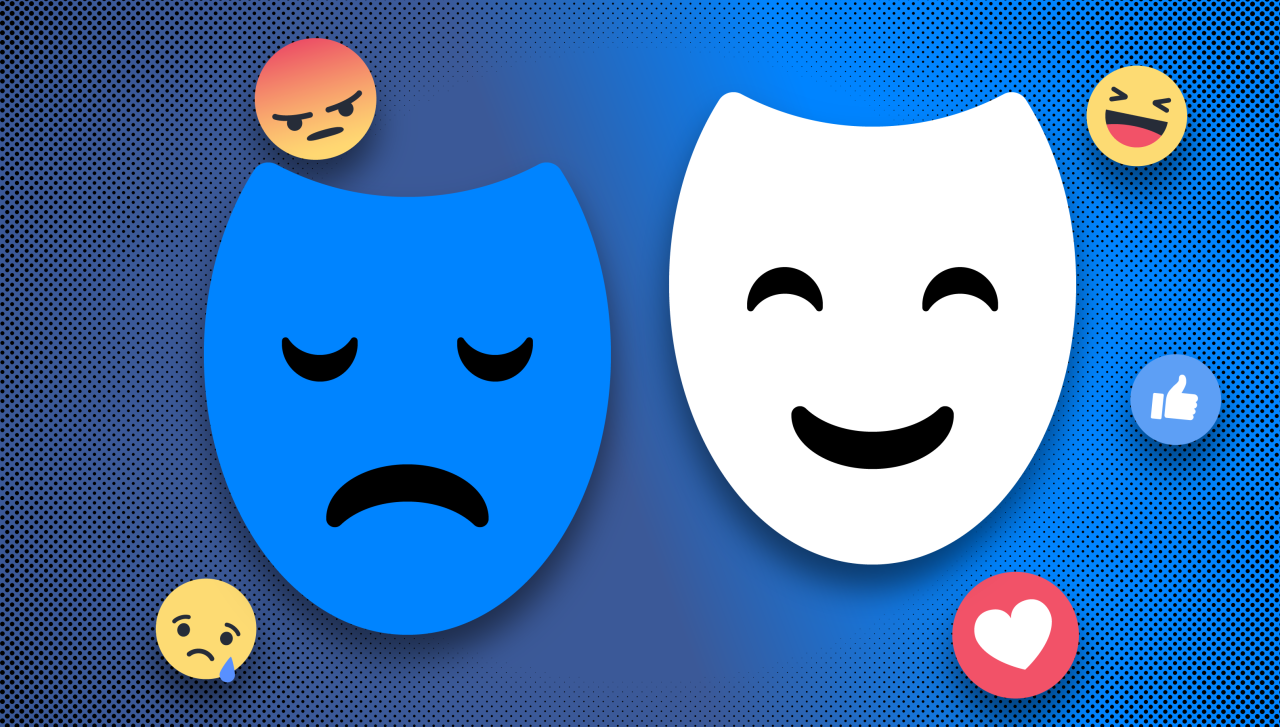
The move to fund news videos not only invalidates Facebookclaims on the &just a tech platform& front, it calls into question how serious the company is about its&time well spent& focus.
This newer set of product development guidelines aims to increase the visibility of personal content at the expense of publishers and other junk.
The company is not alone in thinking about time well spent, even if it doesn&t understand what itdoing about it.
Amid a growing backlash about the evils of technology addiction on our brain, emotional and social development and quality of life, other tech companies, including bothApple and Google, have now announced notable new efforts to regain control over our phones& ability to interrupt, stress and addict. Both are rolling out new digital wellness tools in their next mobile operating system updates that will allow users to monitor and control their phone and app usage like never before.
Facebook, to some extent, has been attempting to participate in this movement as well, even as Apple in particular targets it as one of the apps we should all cut down on.
To its credit, Facebook reduced publisher content on the News Feed and the presence of viral videos, and saw its daily active users decline as a result.
Today, its latest &time well spent&-associated feature is arriving: &Memories,& a section where you can fondly look back on all the personal sharing and connections Facebook has enabled, and celebrate those moments with family and friends. (To be clear, Facebook is not calling Memories a part of &time well spent,& we are.)
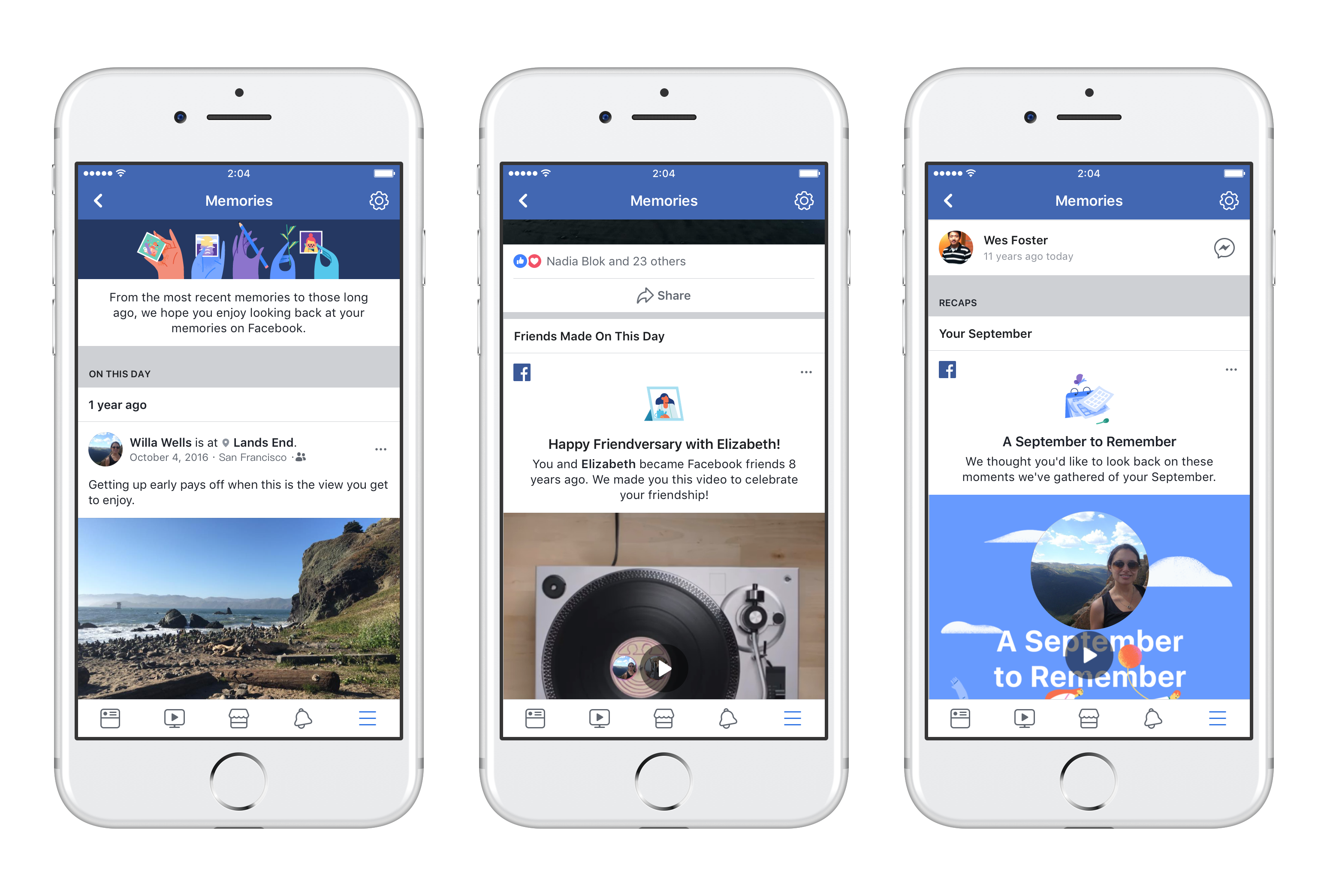
The feature aims to remind users that the social network is truly about your personal connections, not the browsing of third-party content. It ties into Facebooklarger self-image: The company still likes to envision itself, ever optimistically, as a force for good in the world. A platform that brings people together.
Yes, the platform used forRussian election meddling in the U.S. Yes, the one where millions of users had their data misappropriated through lax data handling policies. Yes, the one that contributes to genocide.
But look, have some old birthday party pictures! We care about you!
If ‘connecting people& was the goal, Facebook would look a lot different
Look, therenothingwrong with Facebook pushing users to revisit their memories with family and friends, and many will even appreciate FacebookMemories feature and find joy in using it.
But itincreasingly hard to take Facebook seriously when it claims &connecting people& and &quality time& are its larger goals while it puts its money elsewhere.
To date, Facebook has squandered so many opportunities to innovate on its platform around the subject of personal sharing, and has instead largely turned into a cloning machine where it adopts the innovations of others.
Really, whathas it done lately thatnot a copy of Instagram copying Snapchat
Even Apple now has a better Photos productthan Facebook. Appleis infused with AI smarts and automatic sharing prompts in iOS 12, while Facebook is still figuring out where to stick its Stories module.
And why can&t Facebook users easily search back through their memories and photos, in the robust machine learning-infused ways that Apple and Google can
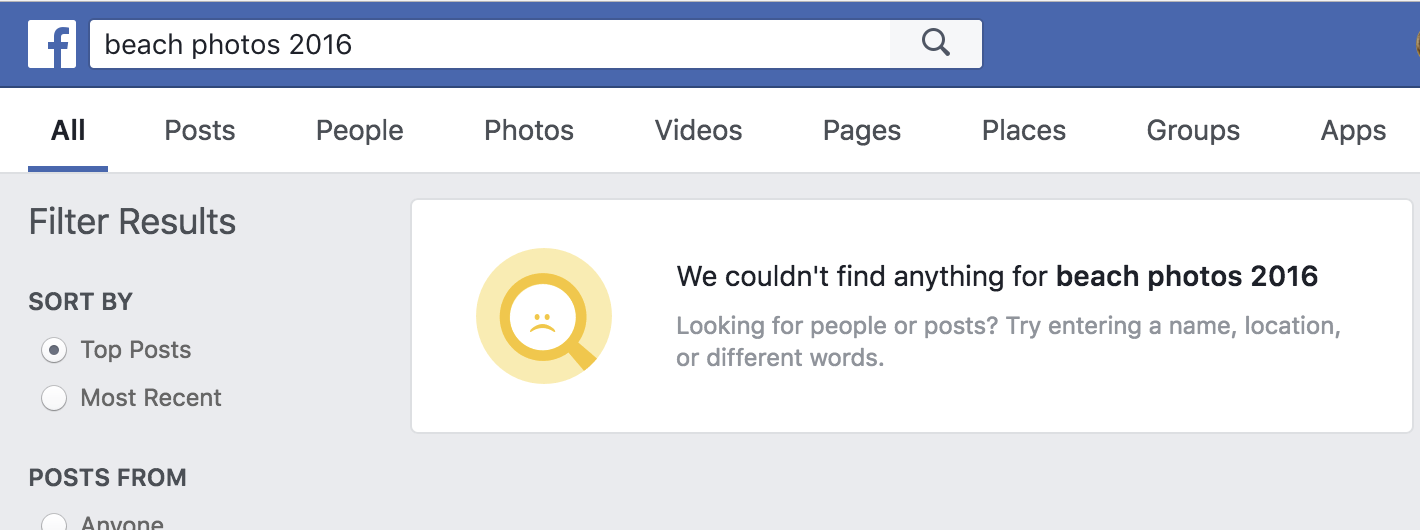
Facebook can&t find old photos from the search bar
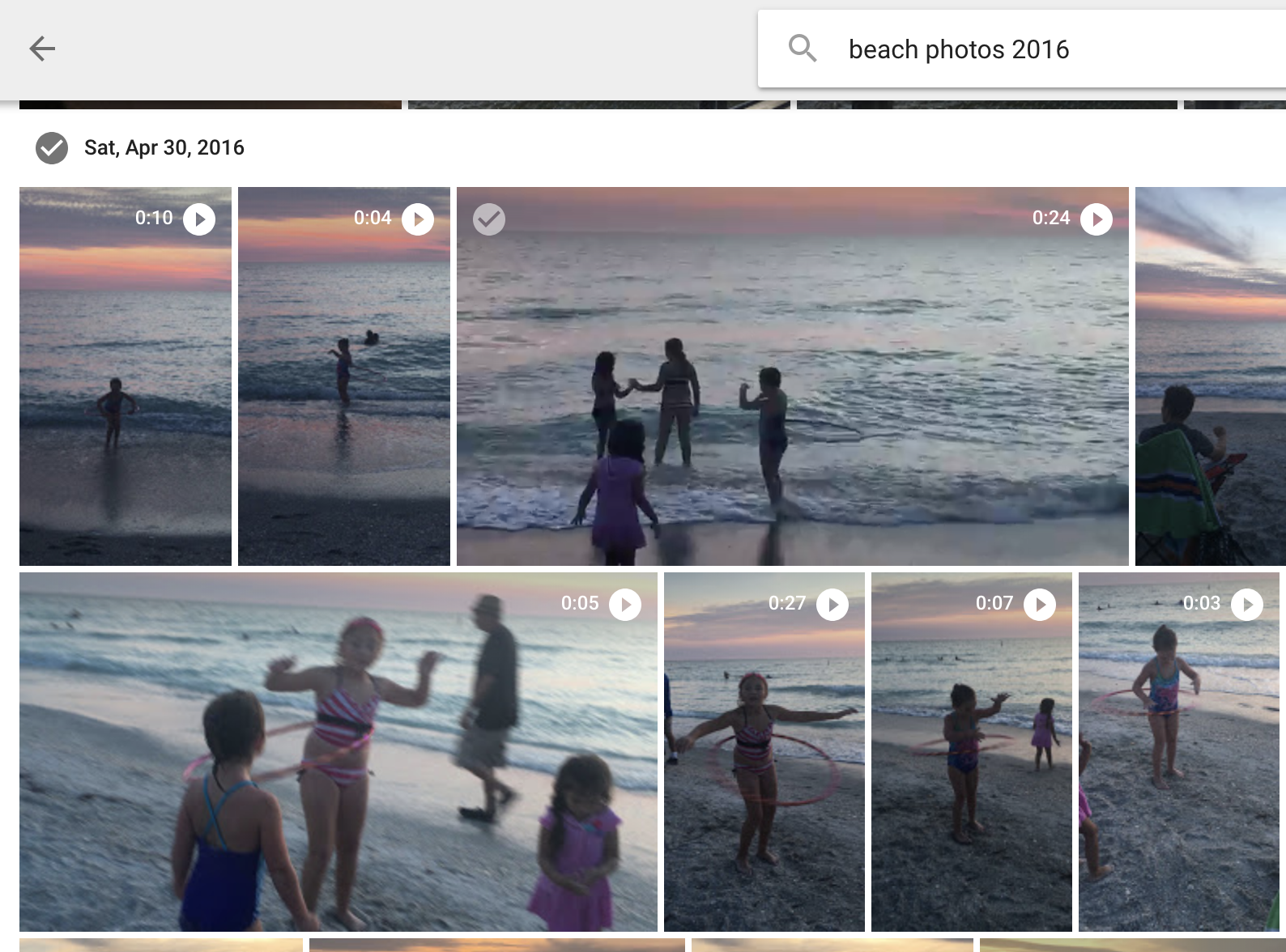
Google can with ease
Really, why hasn&t Facebook — at least more recently — built us anything useful with the data we provided
After all those check-ins and posts about which books we&re reading or what we&re watching on TV, all we get are more targeted ads.
If the company cared about connecting us with our friends, it could have built dozens of features on the back of this data by now:
- Robust search features that turned our shared data into our own private, personal search engines
- What to watch recommendations and reminders for our favorite streaming services
- TV Time-like tools for tracking our binges and meeting fellow fans
- Book clubs based on what your friends are reading
- Notifications about restaurant openings nearby based on where you&ve eaten before
- Collaborative photo albums (yes, it tried this through its Moments app, which spiked in popularity, but instead of doubling down on the app itallowed Google Photos to dominate and Apple to catch up with AI features and iCloud advancements)
- Personalized travel guides (anotherexperiment that died)
- Private family groups that offered things like digitization services for sharing photos from old albums (it could have partnered with third parties on this), grandmarecipes, private updates, family histories and more, instead of pointing families to its general-purpose &groups& product, which isn&t built with the specific needs of families in mind
I mean, these are just a few off the top of my head. I&m sure you can think of a dozen more.
Instead we&ve got Facebook launching some round-up of old personal sharing features (and remember it stole On This Day from Timehop) and investing heavily in everything video byfunding news and cloning Twitch— both of which aim to suck up your time.
I know, I know — ittoo late for Facebook to go back to being a just a social network.
It would require a radical revamp of what Facebook is and does. It would have to remove publisher content, destroy its video business and completely arrest the viral spread of news — fake and otherwise — by restricting URL-laden posts from being viewable by anyone but your friends or the Facebook Groups with which they were shared.
Facebook can&t do this. It won&t do this. Facebook wants to survive.
So instead, letjust insist Facebook be honest about itself:Yes, we&re a media company AND a tech platform AND a video network AND a social network.
Anything claiming otherwise is a lie.
- Details
- Category: Technology
Read more: Facebook still wants to be a media company
Write comment (90 Comments)Page 5096 of 5614

 11
11

